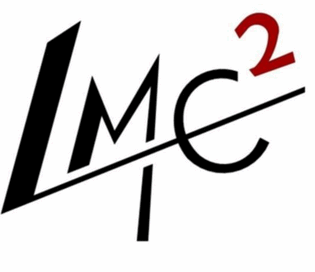
PhD Thesis
Durability of composite systems made from mineral matrices and basalt / vegetal textile (TRM)
Abstract
The rehabilitation of historic buildings, the repair and the reinforcement of concrete structures require technical solutions compatible with the existing structures and building materials. The surface application of TRM (Textile Reinforced Mortar) for the reinforcement of structural elements is one of the most innovative adapted techniques. This type of composite consists of a textile grid (carbon, glass, aramid, PBO, flax, basalt fiber…) embedded in a mineral matrix (cement-based, lime …).
The scientific community is currently working on characterizing different types of TRM and defining the most appropriate test protocols for identifying the short-term mechanical properties of these reinforced systems. For the past ten years, the LMC² laboratory has been actively involved in this phase of investigation and exchanges with other research groups, notably by being a member of the RILEM TC 250 CSM committee (Composites for the Sustainable Healing of Masonry). In order to evaluate the performance of the TRM reinforcement system, it is necessary to characterize the intrinsic mechanical performance of these systems and their adhesion to the support. Tensile tests on TRM show that this type of composite is characterized by a tri-phasic behavior, each phase being driven by an element of the composite: the first phase is elastic (un-cracked phase) dictated by the matrix, the second phase is characterized by the gradual opening of cracks in the matrix (cracking-phase), the third phase mainly concerns the setting in tension of the textile (cracked phase) and the widening of the cracks. The adhesion tests between substrate (masonry or concrete) and TRM show a fracture mode of the reinforced system frequently linked to the sliding of the textile in the matrix.
Few researches deal with long-term behavior, including aging. Recent studies show that basalt textiles subjected to alkaline environments (solution 0.16% Ca (OH) 2 + 1% NaOH + 1.4% KOH representing an interstitial solution of Portland cement mortar pH 13) can suffer a mechanical strength loss of about 50%. Indeed, the presence of OH- ions in the matrix can cause fiber corrosion. In addition, the precipitation of certain hydration products, in particular portlandite Ca (OH)2, can anticipate the ruin of the composite by modifying the textile-mortar interface.
In order to realize an eco-sustainable rehabilitation or repair interventions, the work of this thesis will focus on the durability of TRMs made of natural fiber textiles (basalt, hemp and flax) and mineral matrix (traditional hydraulic binders such as CEM I or NHL or mineral matrix with ettringitic binder).
Basalt, hemp and flax fiber textiles will be subjected to different alkaline environments and then characterized mechanically. Durability analysis will be performed based on the previously defined composite tests. The use of a non-interferometric optical correlation technique will allow the determination of surface deformation. Additional analyzes will be performed to characterize the fiber-matrix interface (X-ray tomography …). We will define the accelerated aging protocol that is the most representative of natural aging. The complete reinforced system will also be tested.
During this thesis, we wish to define a number of scientific locks related to the use of these innovative materials:
- By a materials study for an optimization of the formulation of TRMs
- By an analysis of the damage of the composite materials as a function of the matrices and the fibers subjected to aging
- By an analysis of the evolution of the mechanical performances of the reinforced system after aging
- By a validation of the variables to be taken into account in the reliable formulation of the laws of behavior of a reinforcement material, by an analysis of the mechanisms of damage as a function of time and by the estimation of service life by the probabilistic method . One of the goals of this thesis is the determination of durability indicators in order to evaluate damage of the mineral composites based on basalt, hemp or flax fiber and to identify the different mechanisms of degradation of the bonded assembly. A degradation model aiming to establish the statistical laws of service life of structures repaired by bonded composite materials is currently being developed at LARIS (University of Angers) on tests carried out at LMC2 and the tests carried out within this thesis framework will allow to enrich this model.
Advisors
- Laurence CURTIL
- Carmelo CAGGEGI
- Marie MICHEL
Beginning and end of the PhD thesis
01/10/2018 – 30/09/2021
Teaching activities
…
